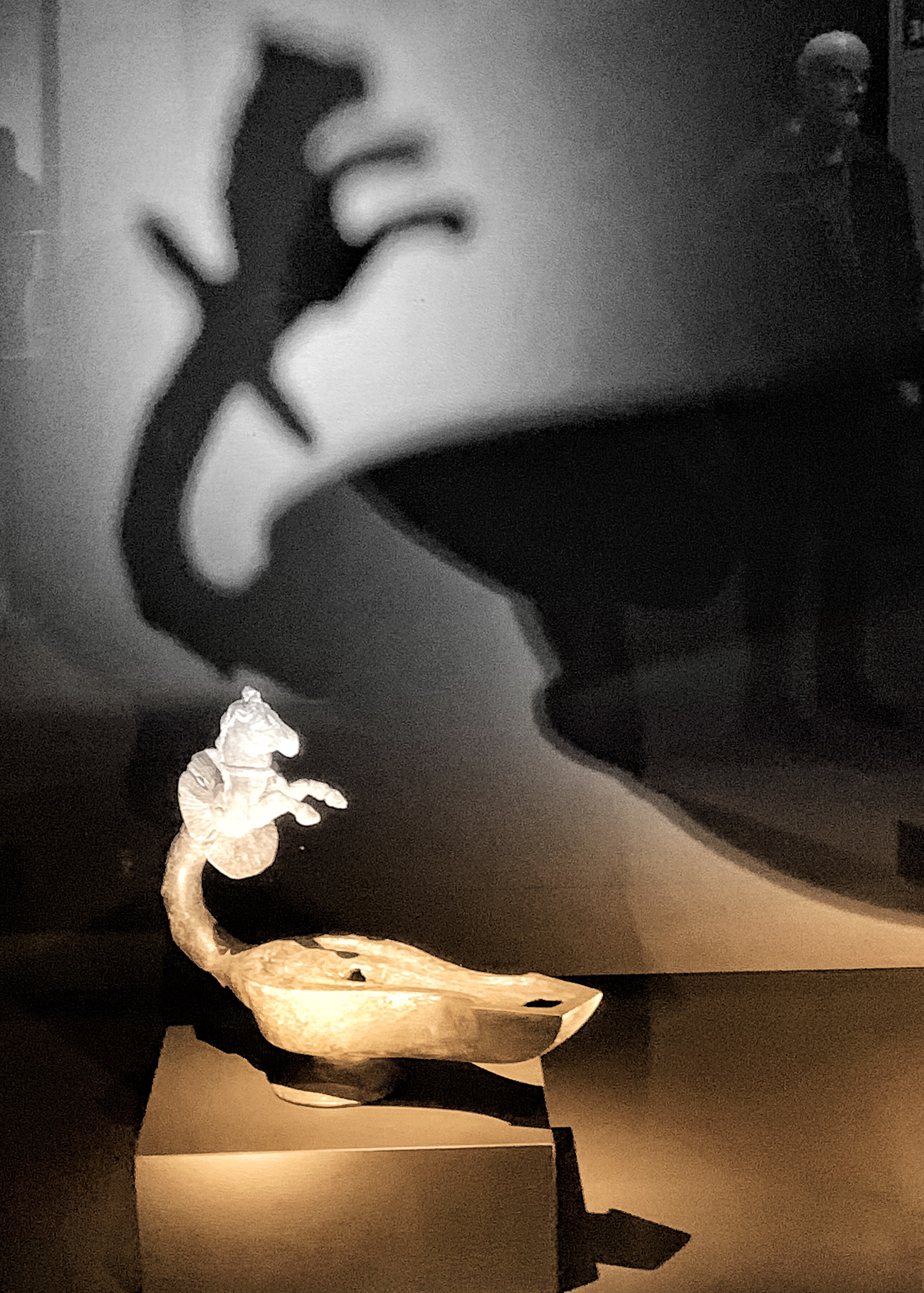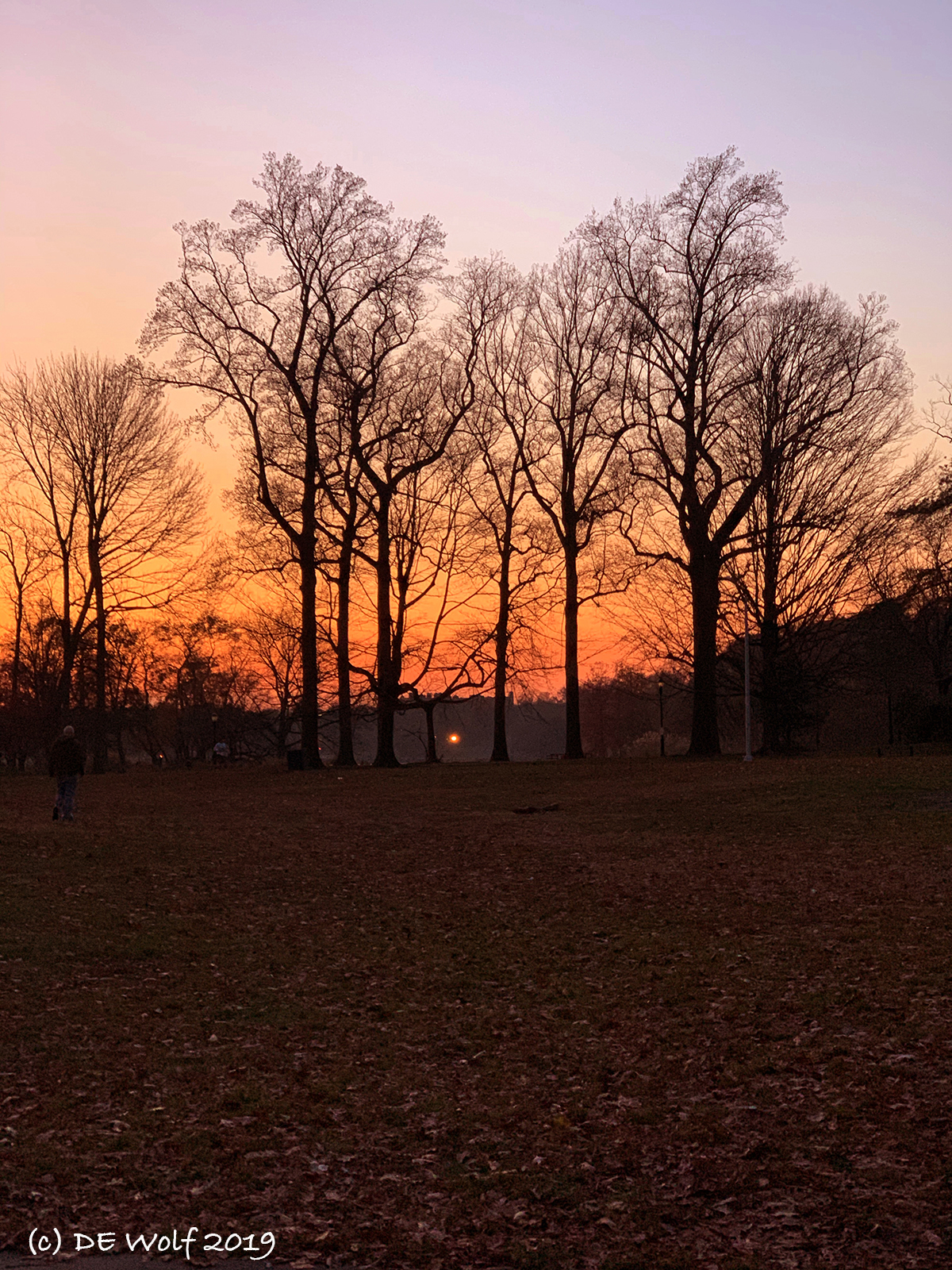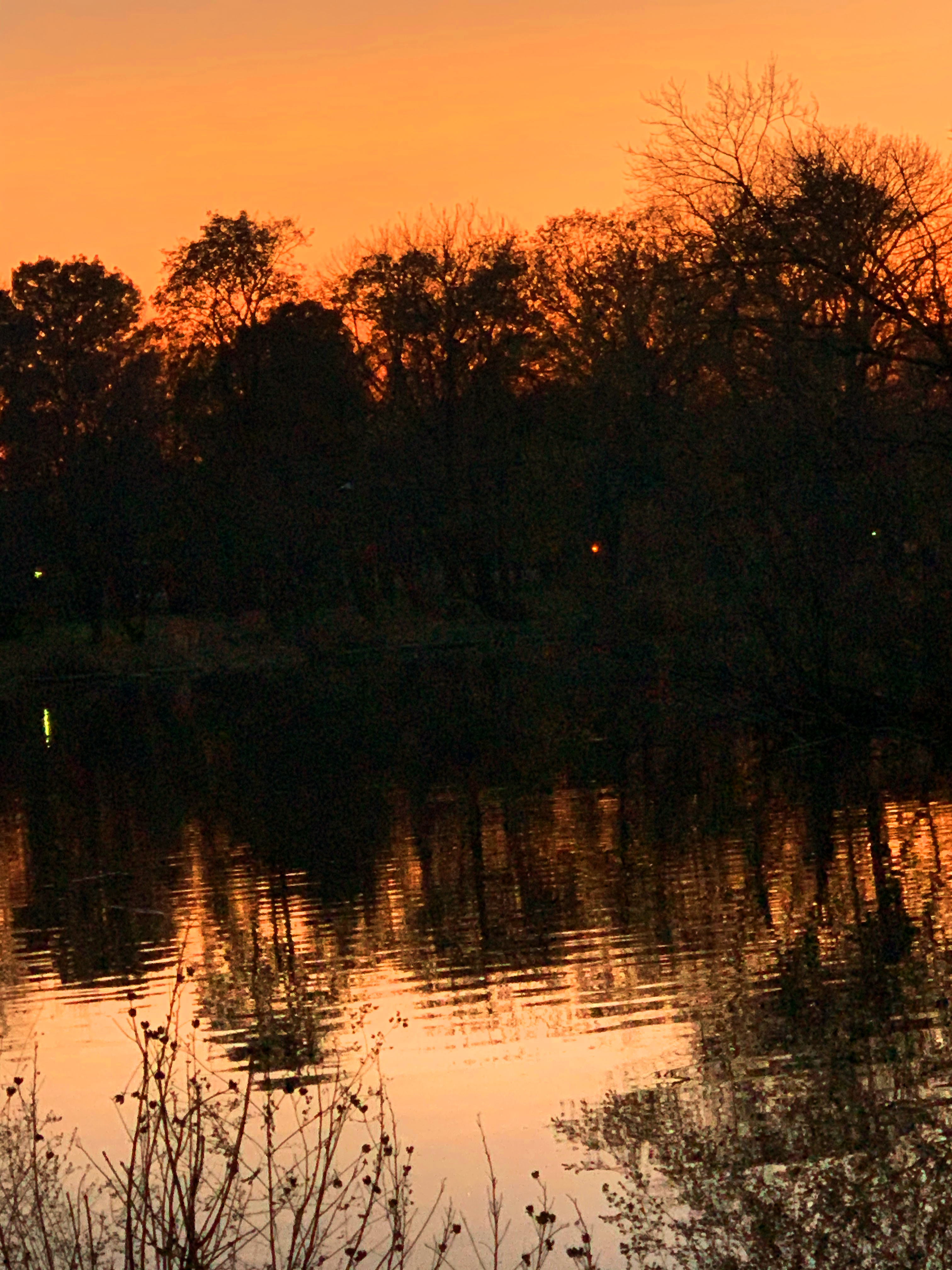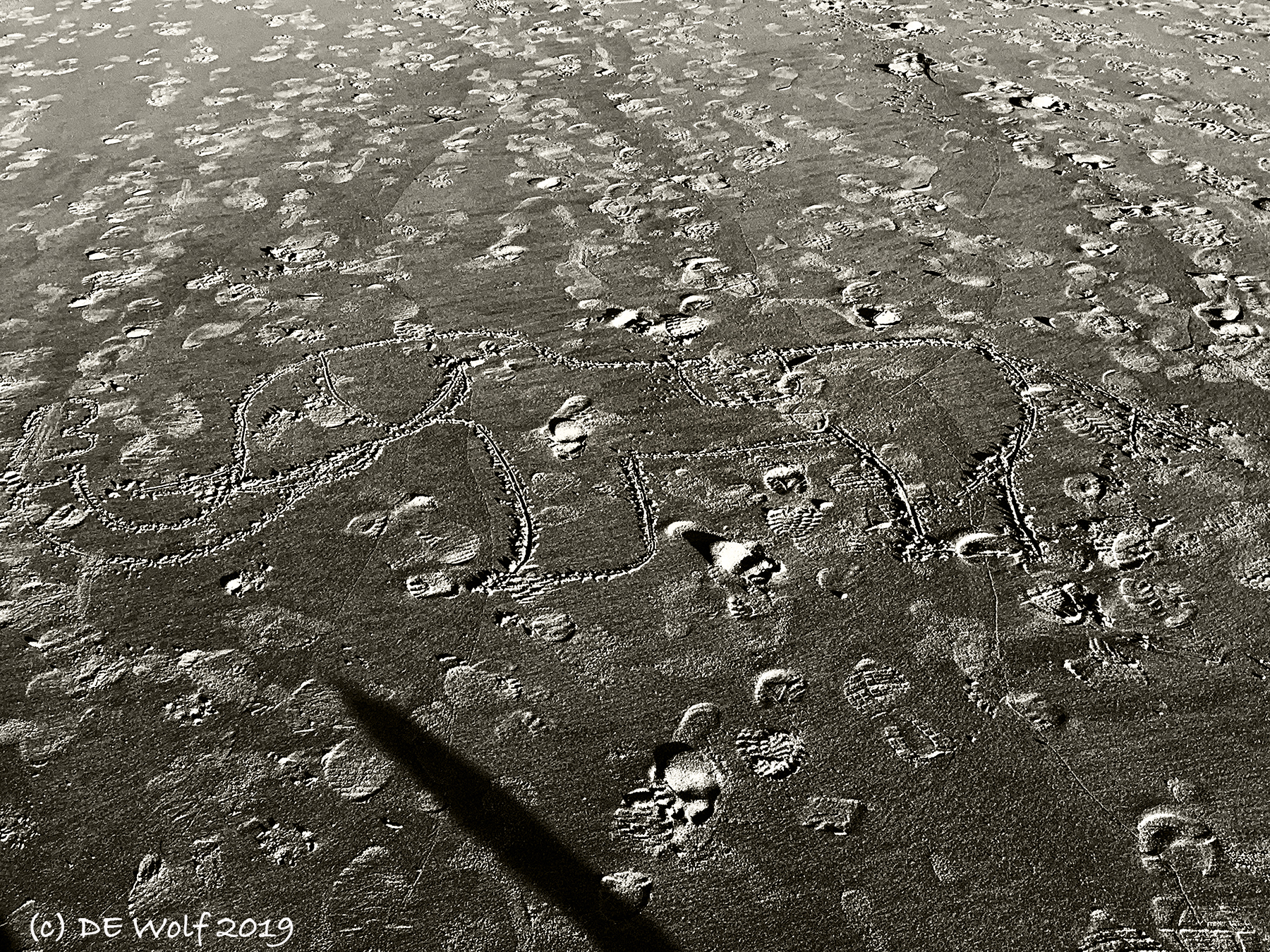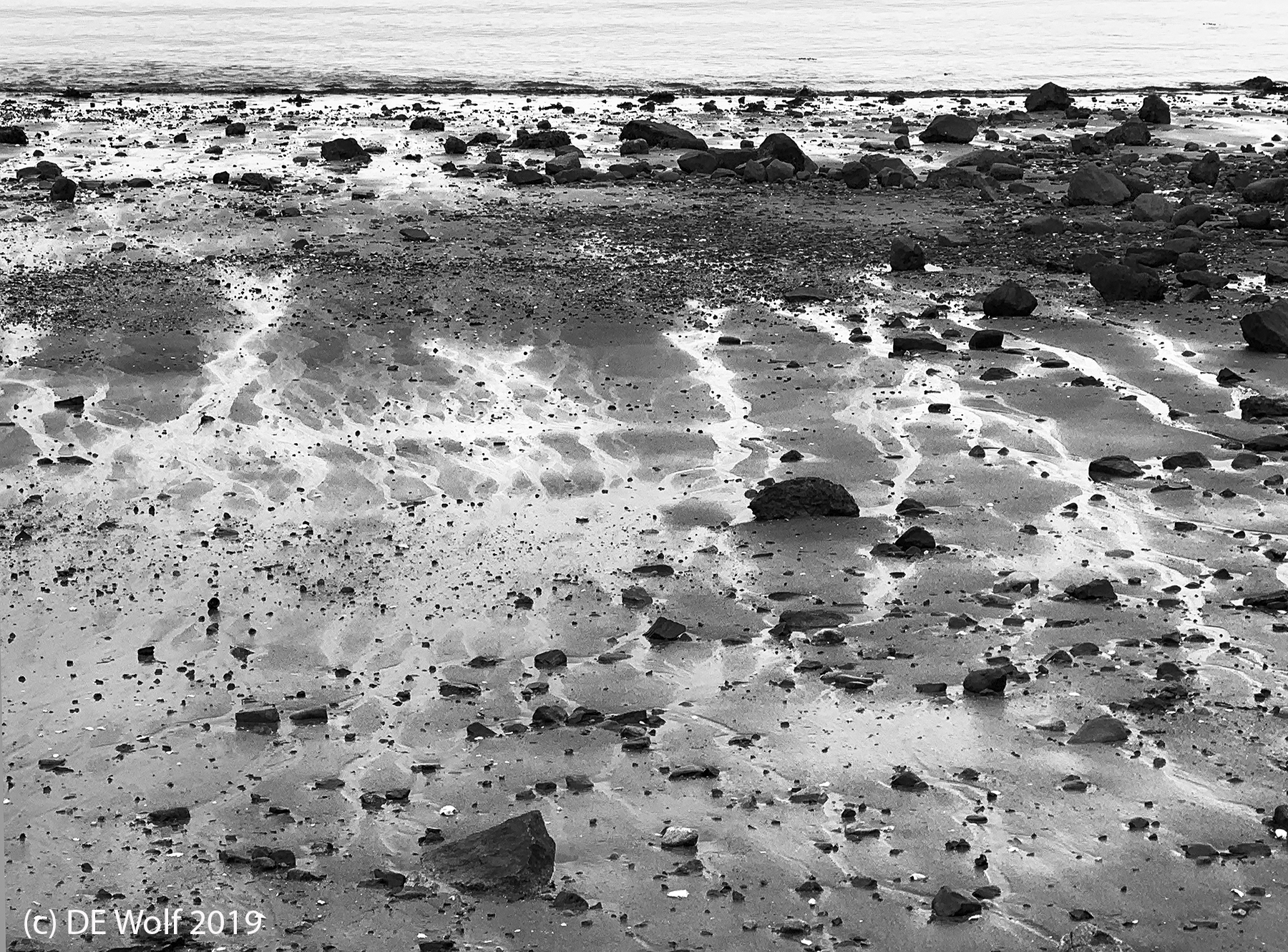A couple of weekends ago I went to the wonderful Nubia exhibit at Boston’s Museum of Fine Arts and took the image of Figure 1. It shows an ancient lamp with a sculpture of a horse, the shadow of the lamp, and a figure in the upper right handsome reflected dimly in the case glass. The optical set up here reminds me of how a hologram is produced. The shadow looms ominously. To me the point of the photograph is one of reality and shadows of the past and through the figure the shadowy relationship between the past and the present. We are defined by the past, and the past is defined by us in the present!
Prospect Park #2
I wanted to share today what was actually the first in a series of images that I took last week of the sunset over the lake at Prospect Park in Brooklyn, NY. I emphasize the order because sunsets evolve and change very quickly; so this was truly the first. I think that the key to this image is the ambiguity created by the bright point of light across the lake from the photographer. What is it? In physical reality it is, of course, just a light, but metaphysically I think that it is something more. It has meaning. It represents a beckoning point, a place to be wondered about and, if you’re worthy, to be achieved. It is perhaps infinitely far away, perhaps not to actually be achieved but to be strived for. It represents the center.
Prospect Park #1
I hope that everyone had a great Thanksgiving! I have just returned from mine and have started working on the many images that I took in my visit to New York City. The first of these is Figure 1, which shows a sunset view of Prospect Park Lake in Brooklyn, New York. This is my old stomping ground and just standing there, beside the lake, watching the sunset flooded me with many memories, mostly good. The orange hues of sunset bring on a sense of stillness and contemplation. But you realize from all the people going by that millions have tread these paths since you yourself did, perhaps a half century ago. The place possesses millions of memories. Does the multitude diminish your own? So many things change; so many things stay the same.
It is, no doubt, a cliché. But perhaps it is worth mentioning the words of Joni Mitchell’s “The Circle Game,” which is itself a vivid meme and memory of bangs and long blonde hair.
“We can’t return we can only look
Behind from where we came
And go round and round and round
In the circle game.”
Heffalump in the sand
Today I was going through some old images and found the photograph of Figure1, taken with my iPhone XS and not “worked-up.” It brought back memories of that wonderful afternoon walk, of about a month ago, on Crane Beach in Ipswich, MA. It is a drawing of an elephant in the sand or more zen of a Heffalump. Such images are precious jewels since they bring not just the joy of a photograph to be completed, but the wonder of the day when you first saw it and, of course, the joy of whom you were with.
These references to Winnie the Pooh, like the concept of a heffalump, are an indelible piece of our western childhoods. Indelible is meant as a paradox, because while the concept of a heffalump and its associated mystery may be indelible in our minds, there is nothing more ephemeral than a drawing in beach sand.
Pooh. piglet, and Christopher Robin opine on heffalumps. They opine not with malicious ignorance, but rather with a wishful want of knowing.
“I saw one once,” said Piglet. “At least, I think I did,” he said. “Only perhaps it wasn’t.””So did I,” said Pooh, wondering what a Heffalump was like.”You don’t often see them,” said Christopher Robin carelessly.”Not now,” said Piglet.”Not at this time of the year,” said Pooh.
The beach at Derby Wharf
Today was really gloomy, damp, and foggy out on the ocean. The mood was marvelous and contemplative. I walked down to the little beach that is adjacent to Salem’s Derby Wharf and took the image of Figure 1, attracted by the glowing licks of water on the beach, which accentuated the otherwise monotonous bleakness.
Looking on the scene at the Salem US National Maritime Historic site, with its three preserved wharfs. It is hard to imagine that there once were fifty such wharves, and that Salem was once the center of “The China Trade.”
Derby Wharf is the longest and was begun in 1762 by Richard Derby, Sr., one of Salem’s wealthiest merchants. Over the years, as the Derby family’s trade expanded, they extended the wharf, until in 1806 it reached its current half-mile length. Hatch’s Wharf, the shortest wharf, was built in 1819, and Central Wharf was built in 1791 by Simon Forrester. Derby Wharf Light Station was built in 1871.
The park has put out Adirondack chairs for visitors to sit on and look out over the beach. If you restrict your eyes, as I have done here, you see only the natural world and can watch the cormorants and diving ducks like the buffleheads in little groups, at any moment ready to submerge or take flight. It is all so very wonderful!
Waterline
Figure 1 is an image of the waterline on the, now being restored tall ship, “Friendship of Salem,” which is berthed at the United States Maritime Historic Park at Derby Wharf in Salem, MA. There is some significance and parallels to waterlines and our lives.. Sometimes we ride high on the sea of life and at other times, burdened by care, we ride low. But maybe more significant is the fact that when riding low and heavy laden our journey is much more stable against the waves. Lessone may be learned from adversity.
Canon T2i with EF70-200 mm f/4L USM lens at 98 mm, ISO 800, Aperture Priority AE Mode 1/80tyh sec at f/7.1 using pattern metering and no exposure compensation.
Stairs to the church
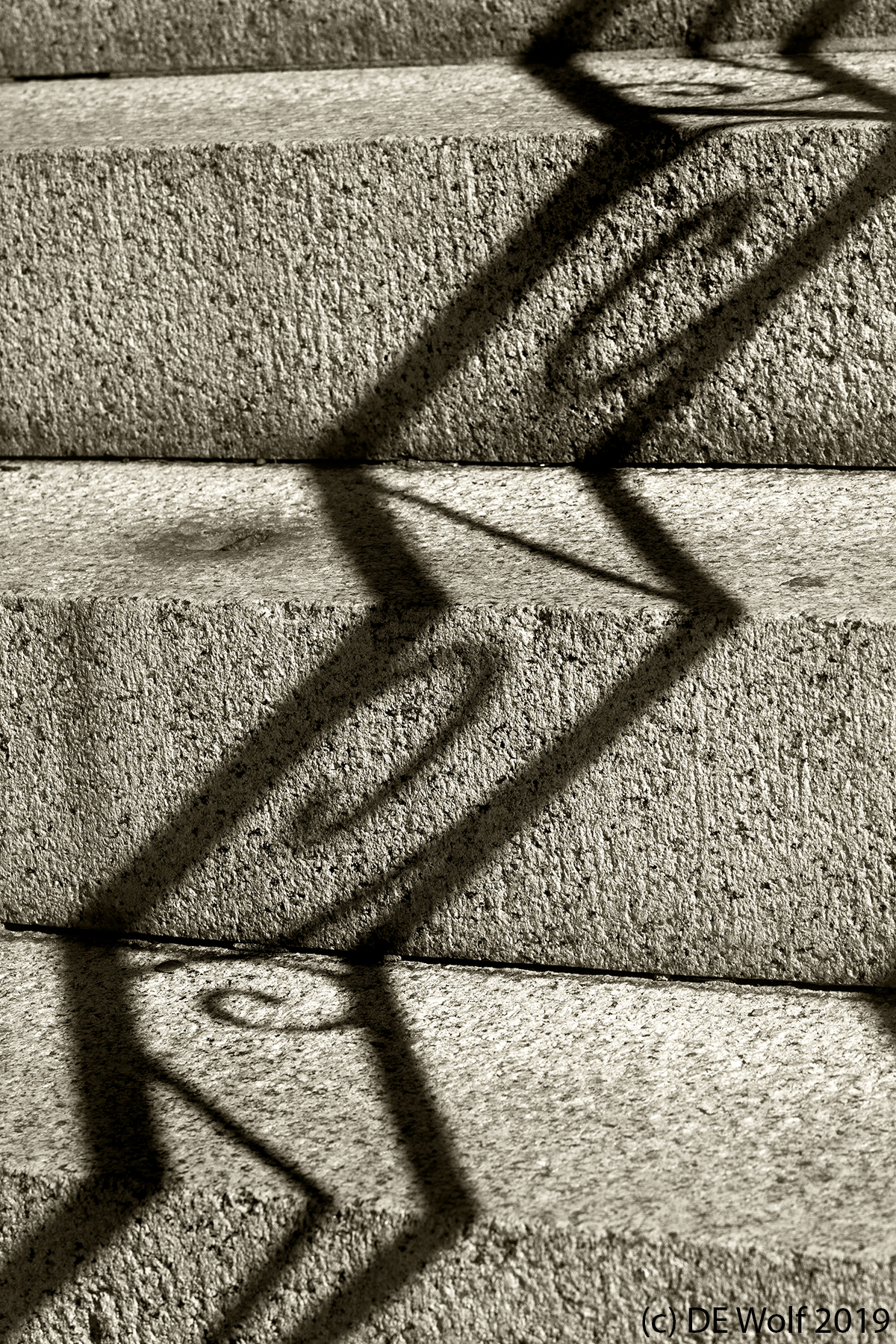
Figure 1 – Shadow of the ironwork railing on the steps of the Immaculate Conception Church, Salem, MA. (c) DE Wolf 2019.
The last couple of days have been pretty wretched here in Massachusetts’ North Shore. So I am going to default today to a photograph that I took last week. It is Figure 1 and shows the shadow of the ironwork railing on the stairs of Salem’s historic Immaculate Conception Church. Symmetrical abstracts, here shadow and stone, reflect, quite literally the idea of symmetry in nature. There are so many angles in this image, but they all repeat in wonderful unison. And I will point out an apparent paradox. What you have are parallel lines. The first set of parallels are the edges the steps, front and back. The second set is the shadows of parallel rails of the fence. But while parallel lines mathematically stretch out to meet in infinity, every time the two sets intersect, the parallel shadows are diverted from this task and change direction. As a result step by step the shadow parallels on the vertical part of the steps shift to the left, while the shadow parallels on the surface of the steps shift to the right. Ain’t the complexity of nature wonderful?
I am ready to quote Edith Wharton today, who said:
“The desire for symmetry, for balance, for rhythm in form as well as in sound, is one of the most inveterate of human instincts”
This precious stone set in a silver sea…
Today I thought that I would share a family photograph. My cat Cloe and I were watching Shakespeare’s Richard the II the other night. She is quite the aristocat and Shakespeare aficionado! There is this famous scene, when Sir John of Gaunt portends the folly of Richard’s actions and the terrible effects they will have on his blessed England. This was delivered with great emotion by Graham Crowden, and Cloe stood up mesmerized by face and voice. Hence the photograph of Figure 1.
This royal throne of kings, this sceptered isle,
This earth of majesty, this seat of Mars,
This other Eden, demi-paradise,
This fortress built by Nature for herself
Against infection and the hand of war,
This happy breed of men, this little world,
This precious stone set in the silver sea,
Which serves it in the office of a wall
Or as a moat defensive to a house,
Against the envy of less happier lands,–
This blessed plot, this earth, this realm, this England.
William Shakespeare, “King Richard II”, Act 2 scene 1
Burned in memory

Figure 1 – Students gather at the Brandenbourg Gate as the Berlin Wall and the iron curtain fall, November 9, 1989. Attribution
I think we cannot let the day go by without remembering a major photographic moment that is burned into our memories. Thirty years ago today, all around the world, we witnessed the fall of the Berlin Wall and the lifting of Churchill’s “Iron Curtain.” This is, perhaps, one of those generational moments that define a us in our age, in holding it in a collective memory that separates us from the next generation. It speaks so vividly of the power of the visual image and how it can seize us.
It is an antique image, from when America was great, when we were engaged globally in the defense of liberty and democracy. Most significantly we were filled with the vision of what despots hated the most in us, “American Exceptionalism.”Perhaps we shall be once more.

